


Cipio has gained attention in the influencer marketing space for its ability to integrate UGC and community-driven content with ecommerce workflows. However, many DTC brands and marketers report some recurring frustrations: limited influencer discovery tools, lack of campaign automation compared to competitors, and pricing that feels high given the platform’s functionality.
As a result, users on review platforms and community forums are actively seeking Cipio alternatives that offer stronger reporting, easier scaling, and a more intuitive UI.
Influencer Hero stands out as the top Cipio alternative thanks to its all-in-one approach, combining influencer discovery, outreach, affiliate tracking, and content management in one place. With integrations across Shopify, WooCommerce, and Amazon, it also supports both B2C and hybrid retail models effortlessly.
Recent 2025 data from G2 and Statista show that over 63% of ecommerce brands are increasing budget allocation toward influencer marketing platforms with end-to-end campaign tools and clear ROI tracking. With that in mind, this article compares 10 top Cipio alternatives across features, pricing, and reviews, giving marketers the clarity they need to choose the right platform for scaling efficiently.
Here are the top 10 Cipio alternatives we’ll explore in this article:
Here are four specific reasons why users are actively looking for Cipio alternatives, based on insights from user discussions:
Many users report that Cipio’s influencer database lacks depth and versatility. It’s heavily geared toward micro and nano influencers within niche communities, which may not suit brands looking to scale or reach diverse markets.
While Cipio excels in UGC and community building, the campaign management tools are often described as clunky or unintuitive. Users have pointed out the lack of automation features, such as bulk outreach, performance tracking, or content approval workflows, that are now standard in other platforms.
For many DTC marketers, clear ROI tracking and performance insights are non-negotiable. Cipio’s reporting dashboard has been criticized for offering only high-level metrics, with limited customization or export options.
Several users mention that Cipio’s pricing structure feels steep considering the product’s limitations. There’s a perception that the platform is still developing key features, yet is priced similarly to more robust tools like CreatorIQ or GRIN.
This highlights why many growing brands and marketing teams are evaluating more complete, scalable alternatives to Cipio.
Our comparison focuses on several key aspects:
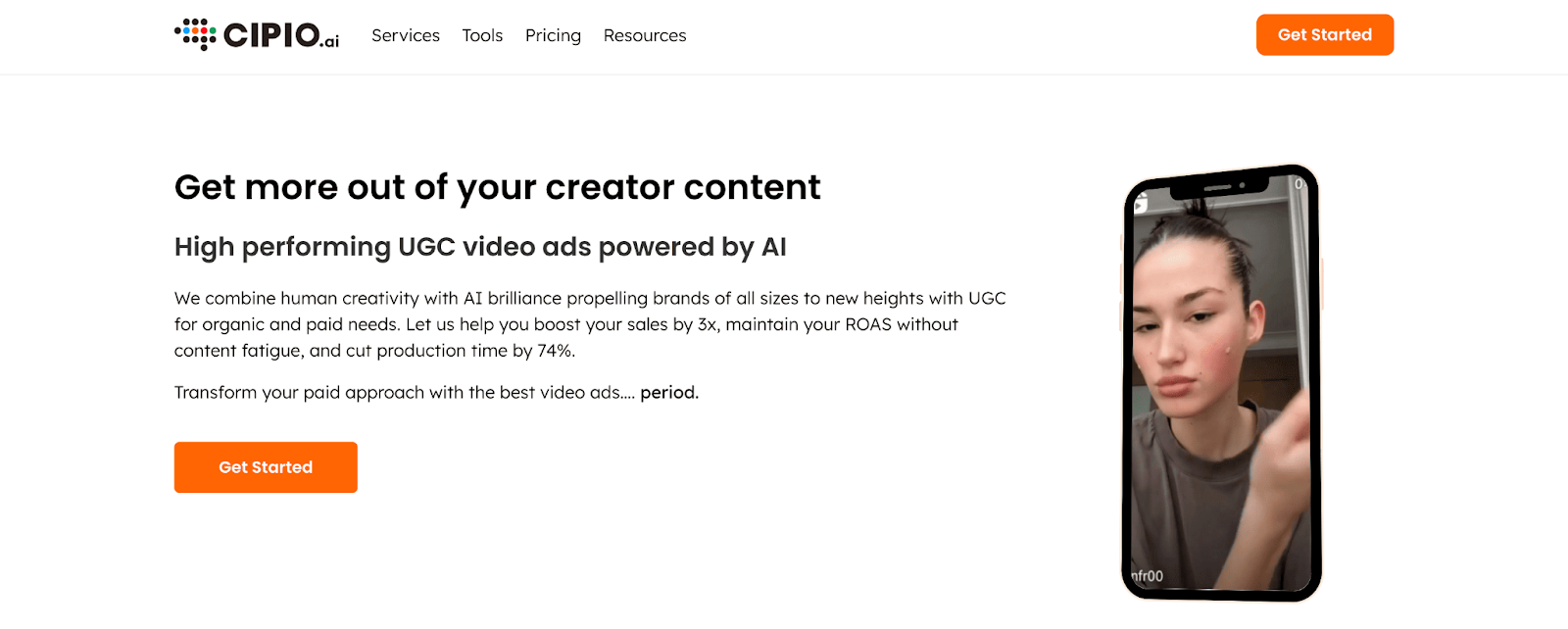
Platform Coverage: While its main focus is Instagram, Cipio-created content can be repurposed for use across Facebook, TikTok, YouTube, and paid social ads, depending on the brand's distribution strategy.
Best For: Cipio is best suited for eCommerce brands focused on visual storytelling, especially those operating on Shopify or Amazon, who want to scale influencer gifting and UGC-driven paid ad strategies without handling the creator management internally.
Pricing: Cipio offers three flexible pricing models.
Pay-As-You-Go:
(No contract required; billed monthly based on usage.)
Quarterly Plan (min. 15 creators & 18 ads):
Annual Plan (min. 60 creators & 72 ads):
Reviews: 4.9 / 5.0 (Glassdoor)
Ease of Use (UX/UI): Users describe Cipio’s interface as clean but somewhat limited in customization options for advanced users. The lack of a self-serve dashboard for outreach or campaign analytics can be frustrating for marketers who prefer more in-platform control. However, its streamlined workflow and fully managed service appeal to teams with limited internal resources.
Customer Support: Brands report that their account managers are responsive and proactive in sourcing creators and resolving issues, but some users wish for more visibility into creator interactions without relying entirely on Cipio’s internal team.
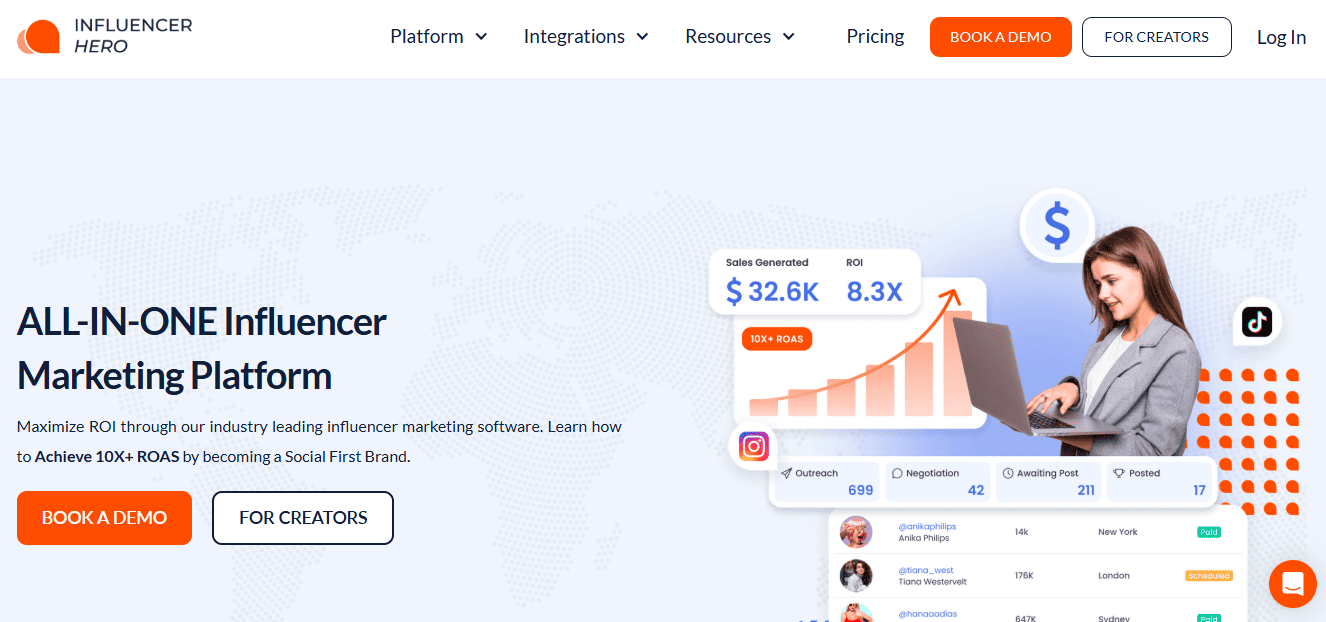
Platform Coverage: Instagram, TikTok, YouTube, Facebook, Pinterest, Snapchat, X, Twitch
Best For: Ideal for growing D2C brands and eCommerce teams focused on scaling influencer marketing campaigns, managing large-scale seeding, and achieving ROI through automation.
Pricing: (Plans are monthly and scalable.)
Reviews: 5.0 / 5.0 (Capterra)
Ease of Use (UX/UI): Known for its clean, intuitive design, Influencer Hero features a user-friendly interface with a streamlined dashboard, automated workflows, and customizable email templates. The platform's ease of use allows teams to get up and running quickly without steep learning curves.
Customer Support: Offers premium customer support with 24/7 live chat, responsive email assistance, a comprehensive Help Center, and a dedicated account manager from day one. Pro plan users also gain access to optional strategy consultations and a private Slack channel for faster, ongoing support.
When comparing Cipio and Influencer Hero, the key differentiators lie in their feature set and pricing.
Influencer Hero stands out with its multi-platform eCommerce support, offering integrations with Shopify, WooCommerce, and custom platforms, something Cipio doesn't provide at the same scale. Additionally, Influencer Hero’s AI-powered CRM makes managing large-scale campaigns seamless, with automated workflows that save hours per week.
While Cipio offers basic influencer marketing tools, Influencer Hero excels in personalized, AI-driven outreach and CRM capabilities, catering specifically to D2C brands looking to scale. Pricing-wise, Influencer Hero offers clear, structured plans that scale with brand growth, whereas Cipio’s pricing model may not be as transparent or flexible.

Platform Coverage: Instagram, TikTok, YouTube, Facebook, Pinterest, X, Snapchat, Reddit.
Best For: Traackr is ideal for brands focused on influencer performance benchmarking, ROI tracking, and optimizing budget allocation. It’s particularly well-suited for large enterprises and global brands seeking in-depth analytics and precise performance metrics.
Pricing:
Reviews: 4.3 / 5.0 (G2)
Ease of Use (UX/UI): Traackr is known for its clean layout and intuitive user interface, which makes influencer management easier once users are trained. However, it has a learning curve due to its more advanced features, which some users find overwhelming initially. Once users are familiar with the platform, it is highly efficient and logical.
Customer Support: Traackr is praised for its exceptional customer success team, providing top-tier onboarding, responsive support, and strategic consulting. Users report that the support team is proactive, offering personalized assistance to ensure campaign success. However, there are occasional reports of performance issues with the platform, which can hinder the user experience.
Traackr offers advanced analytics, including the Brand Vitality Score (BVS) and precision budget optimization, which are ideal for large enterprises seeking detailed ROI insights. With features like real-time campaign performance tracking and global market benchmarking, Traackr provides sophisticated tools for performance-driven brands. However, Traackr’s pricing starts at $32,500/year, making it more suitable for large teams or long-term campaigns.
On the other hand, Cipio offers flexible, cost-effective pricing with three plans: the Pay-As-You-Go plan, which costs $149 per creator and $459 per ad creative, with no contract required and billed monthly based on usage; the Quarterly Plan, which costs $129 per creator and $349 per ad (with a minimum of 15 creators and 18 ads); and the Annual Plan, which costs $99 per creator and $299 per ad (with a minimum of 60 creators and 72 ads).
While Traackr excels in advanced features, Cipio provides a simpler, more budget-friendly solution, especially for smaller brands or those scaling gradually.

Platform Coverage: Instagram, TikTok, YouTube, X , Twitch, Pinterest, WordPress blogs.
Best For: Upfluence is best for eCommerce brands, particularly Shopify and Amazon sellers, looking to scale their influencer marketing campaigns, manage affiliate tracking, and enhance ROI through customer-influencer conversions.
Pricing: Upfluence offers annual contracts with the following pricing.
Reviews: 4.6 / 5.0 (G2)
Ease of Use (UX/UI): Users appreciate Upfluence for its clean, intuitive interface that simplifies influencer management. However, there is a learning curve due to the platform’s robust features. Once users are familiar with it, they find it easy to manage campaigns, influencer communications, and performance tracking.
Customer Support: Upfluence offers responsive and helpful customer support, with users highlighting the dedicated account management. However, some users mention that setup can be complex for beginners, requiring training to fully leverage the platform’s capabilities.
Upfluence offers a more comprehensive, end-to-end influencer management solution, excelling with its AI-powered influencer discovery, Shopify and Amazon integrations, and automated outreach. It’s well-suited for eCommerce brands looking for detailed sales tracking and affiliate management across multiple platforms. However, its high cost (starting at $1,276/month) and annual commitment may be a barrier for smaller businesses or those with more flexible needs.
In contrast, Cipio provides a more cost-effective solution with flexible pricing plans, including Pay-As-You-Go and annual options starting at $99 per creator. While Cipio focuses heavily on user-generated content (UGC) and gifting with performance optimization, Upfluence offers a broader feature set for tracking affiliate sales, managing multi-platform campaigns, and automated outreach.
Cipio might be a better fit for brands needing a simpler and more scalable influencer marketing tool, especially with lower upfront costs

Platform Coverage: Instagram, YouTube, TikTok, Facebook, X, Snapchat, Pinterest, Twitch.
Best For: Enterprise-level brands seeking robust campaign analytics, competitive intelligence, and creator commerce capabilities with Storefront and Affiliate tools.
Pricing:
Reviews: 4.3 / 5.0 G2
Ease of Use (UX/UI): Users highlight Captiv8's powerful filtering and campaign customization features, particularly for running multiple campaigns simultaneously. However, the UI can be overwhelming for first-time users, especially smaller teams not accustomed to enterprise platforms.
Customer Support: Captiv8’s support has been a recurring concern. While some users appreciate the onboarding, many others report issues with unresponsive service, unresolved payments, and a lack of flexibility in plan options.
The key difference between Cipio and Captiv8 lies in their pricing and target audience. Captiv8 caters to large enterprises, offering deep analytics, competitive intelligence, and campaign management tools, ideal for Fortune 500s or major agencies. However, with an annual-only plan starting at $25K and optional add-ons reaching $20–30K/month, it's priced well beyond the reach of smaller brands.
Cipio, in contrast, is built for mid-market and eCommerce brands, providing flexible influencer discovery, UGC tools, and ambassador management at a more affordable rate. While Captiv8’s pricing starts at $25K/year, Cipio offers competitive plans that make it far more accessible to growing businesses.
Choose Captiv8 for scale and depth, and Cipio for value and flexibility.

Platform Coverage: Instagram, TikTok, YouTube, Facebook, Pinterest, Twitch, X.
Best For: Enterprise brands needing a full-lifecycle influencer marketing platform with real-time data, CRM capabilities, and strong support. Ideal for global companies managing large creator networks across multiple platforms.
Pricing:
Reviews: 4.6 / 5.0 (G2)
Ease of Use (UX/UI): Users highlight the intuitive interface and flexibility in campaign setup and reporting. However, due to its enterprise focus, new users may face a learning curve navigating the extensive features.
Customer Support: CreatorIQ is recognized for offering hands-on support through implementation managers and dedicated success teams. Users appreciate its onboarding assistance, quarterly strategic input, and reliable response times.
Cipio and CreatorIQ cater to different business sizes and needs. CreatorIQ is a comprehensive solution built for global enterprise brands with large influencer teams and complex campaigns. It excels in advanced discovery, robust reporting, built-in payments, and enterprise-grade support, making it a top choice for companies like Disney and Lululemon.
Cipio, in contrast, targets mid-sized eCommerce and DTC brands looking for a more streamlined, affordable platform that still covers discovery, outreach, UGC, and ambassador tools. It offers automation features and pricing that make it more accessible to growing businesses without sacrificing core functionality.
In terms of pricing, CreatorIQ starts at $35,000/year for its basic plan, while Cipio offers more flexible and affordable options that better suit smaller marketing teams and eCommerce-focused strategies.
Choose CreatorIQ for scalability and precision at the enterprise level, opt for Cipio if you need an agile, cost-effective solution to grow your influencer program.

Platform Coverage: Instagram, TikTok, YouTube, Twitch, X (Twitter), Snapchat
Best For: Data-driven brands and agencies looking for advanced influencer discovery, outreach, and ROI tracking. Ideal for companies focused on transparency, brand safety, and eCommerce performance metrics.
Pricing: Custom plans based on usage. Flexible contract terms depending on platform access, campaign volume, and number of reports.
Reviews: 4.5 / 5.0 (G2)
Ease of Use (UX/UI): Users highlight the platform's powerful features but note that it can feel overwhelming for first-time users without proper onboarding. Once learned, the interface becomes intuitive for campaign setup, content approvals, and ROI tracking.
Customer Support: HypeAuditor offers onboarding and technical support, particularly for custom and enterprise clients. While users find the team helpful, support can be limited on lower-tier or entry-level plans.
HypeAuditor is heavily focused on influencer discovery, data transparency, and campaign ROI, making it ideal for brands that want to vet creators thoroughly and measure performance down to individual clicks and conversions. Its AI-powered search and social listening are standout tools for research-driven teams.
Cipio, by contrast, prioritizes automation, UGC generation, and ambassador management. While it covers influencer discovery and outreach, its strength lies in simplifying the creator workflow for eCommerce and mid-sized brands looking to scale with fewer internal resources.
In terms of pricing, HypeAuditor starts at around $10,000/year, with plans scaling up to $60,000, while Cipio offers more entry-level flexibility suitable for growing teams or smaller budgets.
Choose HypeAuditor for advanced data and tracking, go with Cipio if you want simplicity, scalability, and strong automation.
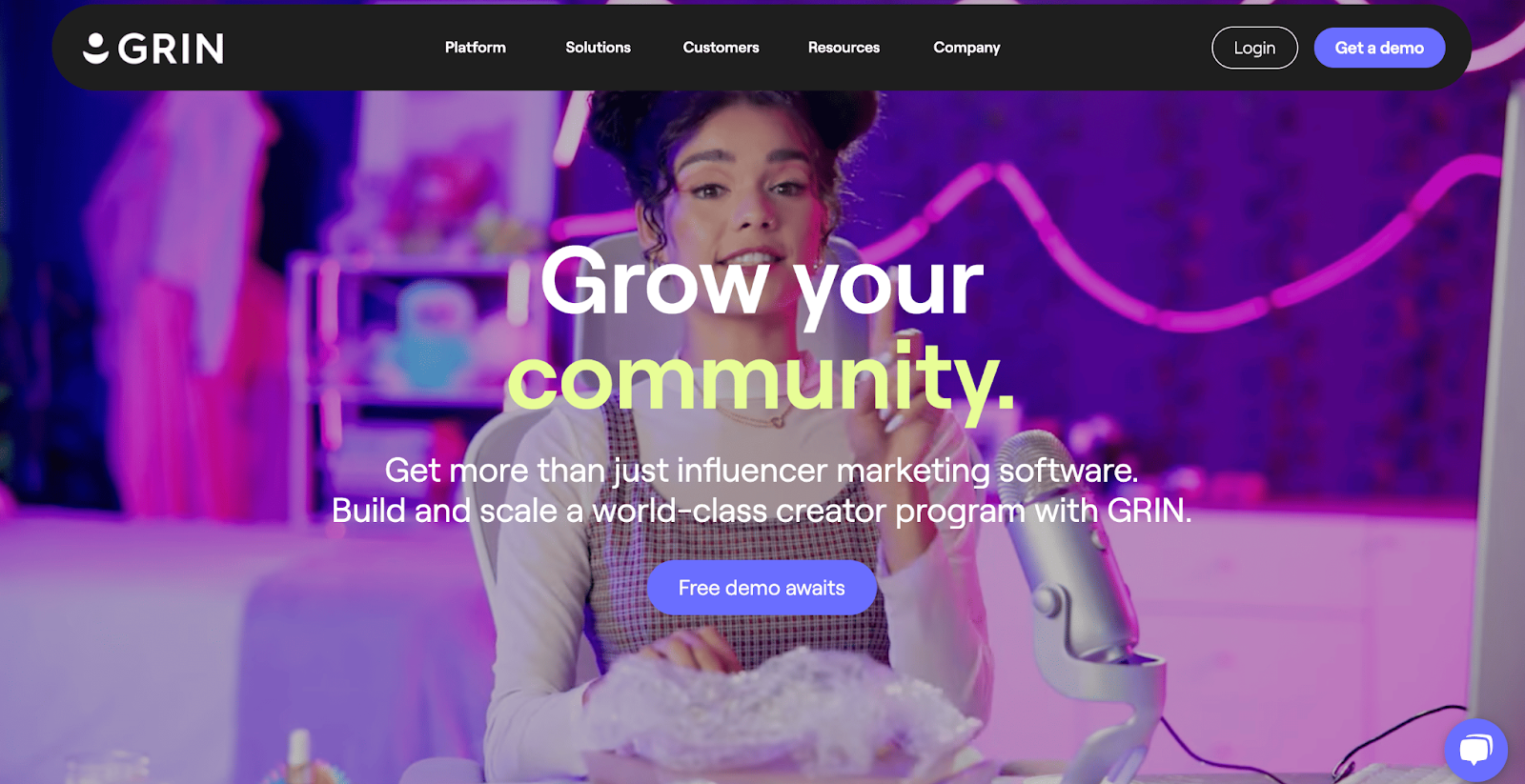
Platform Coverage: Instagram, TikTok, YouTube, X (Twitter), Twitch, Snapchat
Best For: DTC and eCommerce brands looking to manage the full influencer marketing workflow, discovery, gifting, UGC collection, affiliate tracking, and payments—within one centralized platform.
Pricing: Plans start at $25,000 per year, with monthly payments available and a required 12-month commitment; typical monthly costs range from $2,500 to over $10,000 depending on usage, though pricing transparency may vary based on selected features.
Reviews: 4.5 / 5.0 (G2)
Ease of Use (UX/UI): GRIN’s user interface is designed for scalability, helping brands streamline every stage of the influencer journey. Users like the all-in-one dashboard, but some report performance issues, bugs, or difficulty navigating search filters and duplicate creators.
Customer Support: Support is generally praised for onboarding and strategic services, especially for enterprise users. However, smaller teams have reported slow response times, ticket delays, and issues with billing transparency.
GRIN is built specifically for eCommerce and DTC brands with product-heavy operations. Its deep integration with Shopify, WooCommerce, and Magento makes it ideal for managing gifting workflows, affiliate links, and ROI reporting. Features like in-app payments and branded creator portals give GRIN an operational edge, but at a higher price point and complexity.
Cipio, in comparison, is more affordable and flexible for mid-sized brands. It combines discovery, UGC generation, automation, and ambassador management into one accessible tool without the enterprise-level commitment. It’s ideal for teams that want a simpler, more automated solution without sacrificing key campaign tools.
In pricing terms, GRIN starts at $25,000/year with monthly payments available, while Cipio offers lower entry points and flexible plans that better suit scaling eCommerce brands with limited budgets.
Choose GRIN if you’re a product-driven brand needing full eCommerce workflow integration, opt for Cipio if you want agility, affordability, and automation.
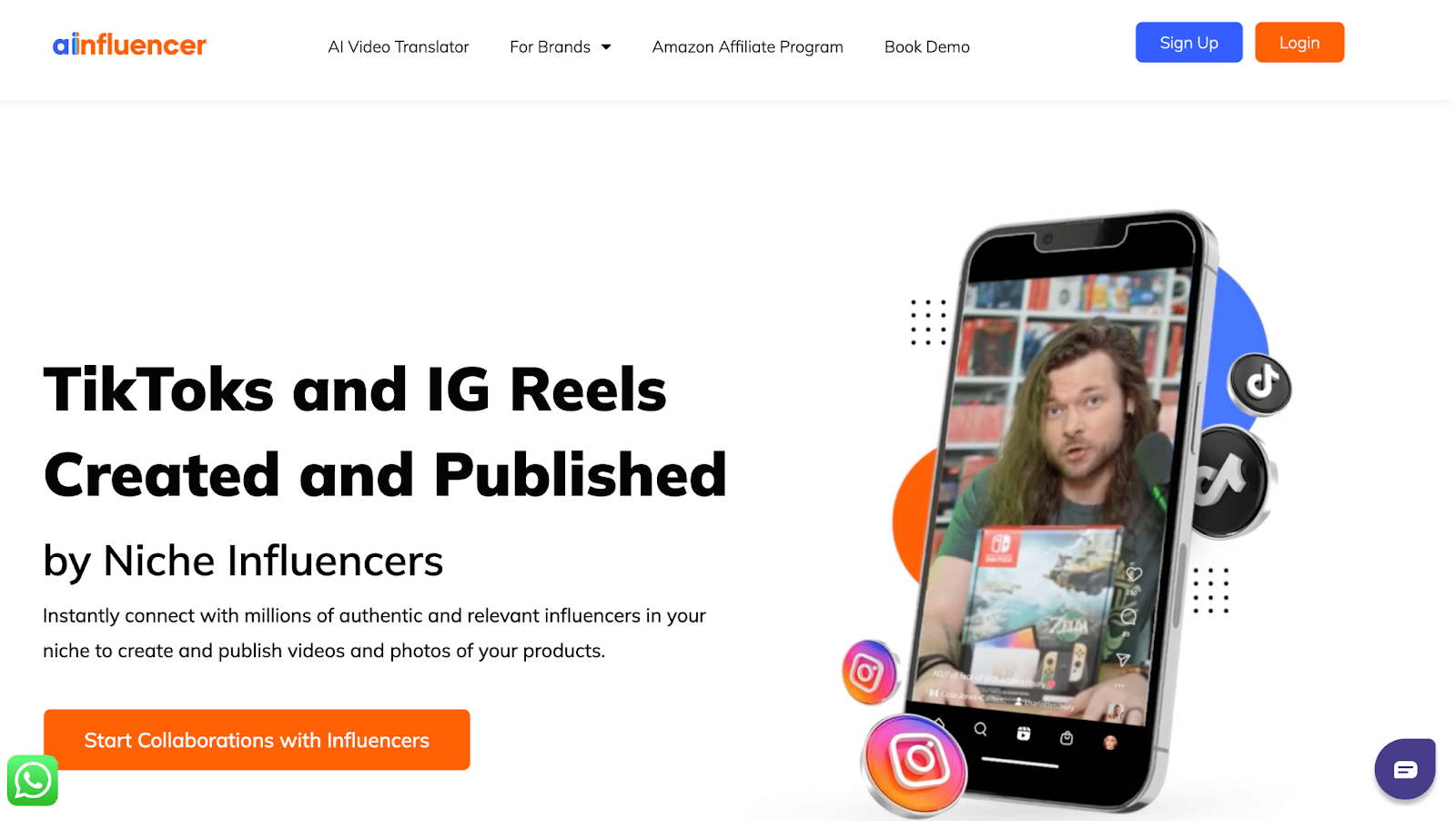
Platform Coverage: Instagram and TikTok
Best For: Budget-conscious eCommerce and startup brands looking for a free, self-serve influencer marketplace to source, negotiate, and manage Instagram and TikTok campaigns quickly, without paying for software.
Pricing: Free self-serve platform (no SaaS fees)
Paid campaign packages (optional):
Minimum influencer payment: $10 per post
Campaign management fees may apply (currently waived in some cases)
Reviews: 4.4 / 5.0 (G2)
Ease of Use (UX/UI): Brands describe AInfluencer as easy to set up and launch campaigns on, especially for Instagram-first brands. The platform is accessible via web for brands and mobile for influencers, making campaign recruitment and messaging streamlined.
Customer Support: Support is responsive for brands running managed campaigns, and users appreciate the escrow system for payment protection. However, those using self-serve features report that support can be slower or less hands-on.
AInfluencer is ideal for brands looking to run quick and affordable campaigns on Instagram and TikTok without committing to expensive software. It offers a free-to-use self-serve platform and flexible paid packages, making it great for startups or low-budget influencer campaigns. The mobile app model also helps brands attract influencer applications directly.
Cipio, on the other hand, provides a more advanced suite with automation, UGC tracking, ambassador program management, and analytics across the full campaign lifecycle. It’s better suited for teams that want to scale their influencer program with a structured, data-driven approach and more robust tools.
In terms of pricing, AInfluencer is completely free for self-managed campaigns, while Cipio offers entry-level pricing with automation and CRM capabilities that AInfluencer lacks.
Choose AInfluencer for low-cost, fast influencer matchmaking, opt for Cipio if you're looking for deeper functionality, scalability, and reporting.
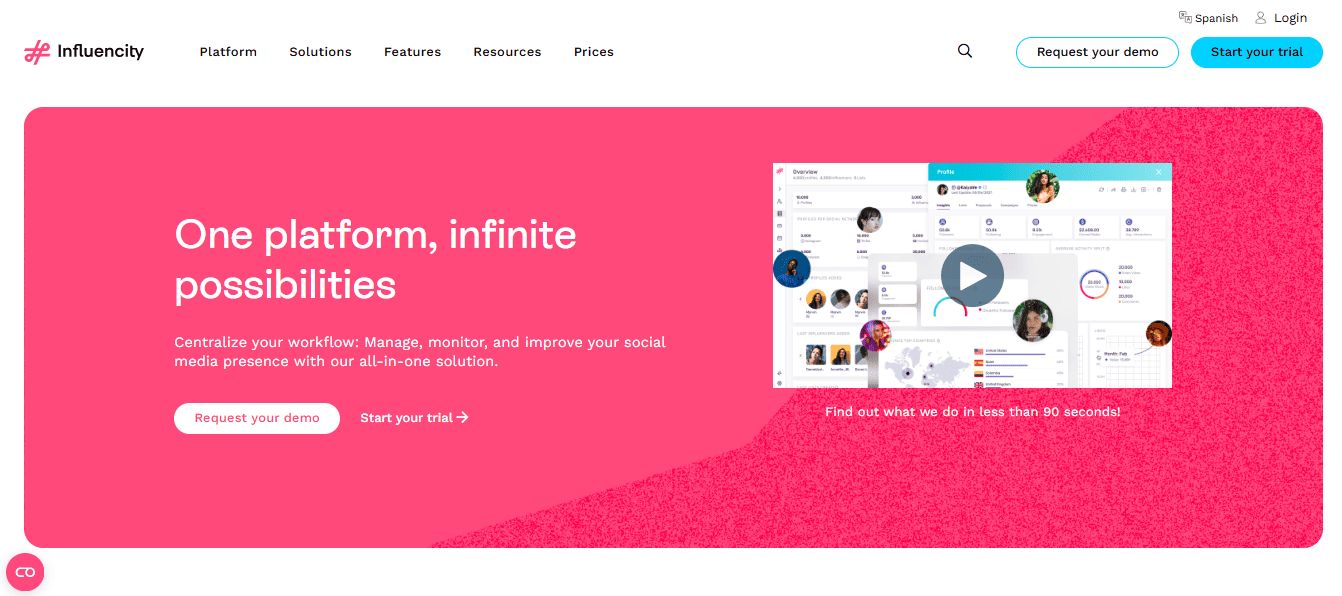
Platform Coverage: Instagram, TikTok, YouTube, Twitter (analytics only)
Best For: Brands looking for a full-funnel influencer marketing platform that combines advanced discovery, CRM, outreach, and campaign tracking, particularly those using Shopify for eCommerce.
Pricing:
Reviews: 4.4 / 5.0 (G2)
Ease of Use (UX/UI): Influencity is easy to navigate and highly visual, with drag-and-drop campaign boards and a well-organized CRM system. Users appreciate the clarity in campaign progress tracking, though the onboarding phase can take several weeks to complete.
Customer Support: Customer service is rated positively, particularly for onboarding and training. However, users note a lack of real-time support tools (e.g., chat) and reliance on external email for follow-ups.
Influencity is designed for teams who want a structured, all-in-one influencer marketing platform with CRM, outreach, and analytics, without the high costs of enterprise tools. Its public-data-based discovery engine, Shopify integration, and visual campaign management tools make it a great fit for small to mid-sized brands with clear workflows.
Cipio, in contrast, focuses heavily on automation, UGC collection, and ambassador management, making it especially valuable for eCommerce brands looking to build long-term communities. While both tools offer discovery and reporting, Cipio includes stronger automation and creator lifecycle features that go beyond Influencity’s campaign structure.
In pricing terms, Influencity starts at $3,816/year, offering one of the most affordable full-suite solutions. Cipio provides more automation and flexibility, but may start at a slightly higher tier depending on feature needs. Choose Influencity for structured workflows and affordable CRM/reporting, go with Cipio if automation, UGC, and creator loyalty are key to your strategy.
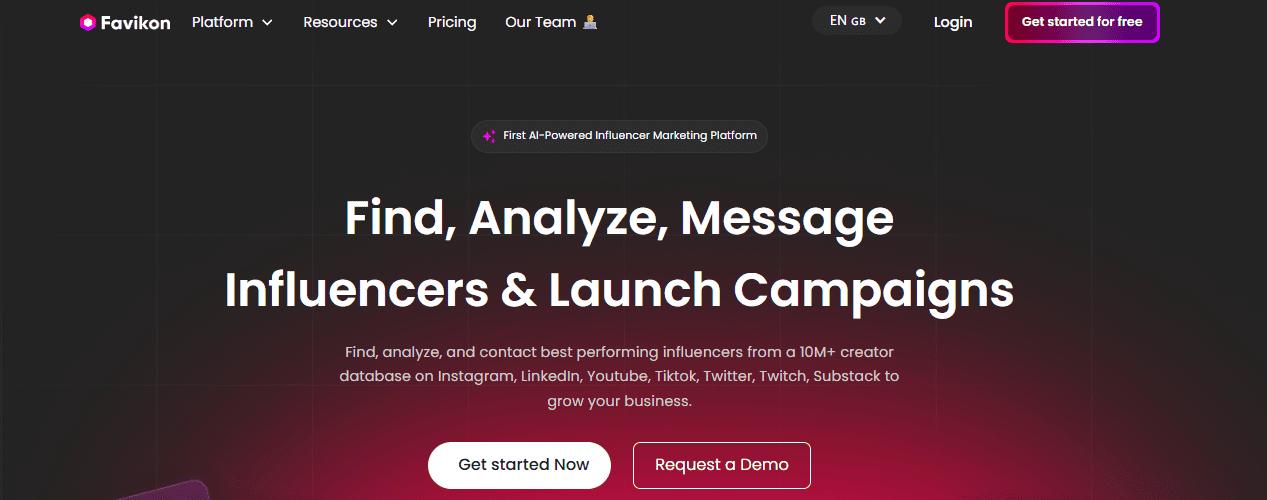
Platform Coverage: Instagram, TikTok, YouTube, LinkedIn
Best For: Data-driven brands and agencies that want AI-powered influencer discovery, smart ranking, and full CRM functionality in an affordable, scalable platform. Especially useful for teams managing multiple campaigns or brands.
Pricing: Annual billing only; extremely affordable compared to most influencer platforms.
Reviews: 4.6 / 5.0 (G2)
Ease of Use (UX/UI): Favikon’s UI is modern and data-rich, designed to appeal to marketers who want deep filtering, smart scoring, and structured campaign workflows. While the platform is intuitive for experienced users, beginners may face a learning curve due to the tech-forward interface.
Customer Support: 24/7 chatbot support is available across all plans, and personalized onboarding is included in the Standard and Pro tiers. Support is generally responsive, but some users mention that contract negotiation and content rights must be handled manually.
Favikon is a lightweight, AI-powered platform ideal for brands seeking highly scalable influencer discovery, performance scoring, and CRM tools. It’s especially appealing to agencies, startups, or B2B marketers thanks to its LinkedIn capabilities, integrated outreach, and browser extension that supports influencer evaluation beyond the Favikon dashboard.
Cipio, in comparison, offers a more hands-on solution for eCommerce brands with its built-in automation, ambassador management, and UGC workflows. While Cipio prioritizes creator lifecycle, product seeding, and UGC reuse, Favikon offers deeper insights into creator quality and cross-platform discovery, but leaves campaign logistics (like payments or rights) to the brand.
When it comes to pricing, Favikon starts at just $69/year, making it one of the most affordable influencer tools on the market. Cipio starts at a higher entry point, but includes automation and integration features that Favikon doesn’t offer.
Choose Favikon if your focus is precision discovery and CRM, opt for Cipio if you want automation and campaign execution built-in.
As influencer marketing continues to evolve, brands have more options than ever to find a platform that aligns with their goals, budget, and operational complexity.
From enterprise-level tools like CreatorIQ and Captiv8, which offer deep analytics and full-scale campaign orchestration, to more flexible and cost-effective platforms like HypeAuditor, GRIN, and Influencity, the best Cipio alternative ultimately depends on your business size, needs, and focus, whether that’s discovery, content generation, affiliate tracking, or ambassador management.
For brands looking for a comprehensive, user-friendly solution with strong automation and UGC capabilities, Influencer Hero stands out as one of the top Cipio alternatives. It offers robust influencer discovery, CRM tools, and content workflows at a competitive price, making it especially appealing to fast-growing eCommerce companies. Whether you're scaling your creator program, launching an ambassador initiative, or optimizing content ROI, there's a Cipio alternative tailored to support your strategy and growth.

Some of the top Cipio alternatives include Influencer Hero, GRIN, CreatorIQ, Captiv8, and HypeAuditor. These platforms offer a wide range of features from influencer discovery and CRM to campaign tracking, UGC collection, and affiliate integrations.
For eCommerce brands, Influencer Hero and GRIN are standout choices. Influencer Hero offers seamless workflows for ambassador management, UGC generation, and Shopify integration, while GRIN specializes in end-to-end eCommerce influencer programs, from product gifting to ROI tracking. Both platforms provide tools specifically tailored to online retailers looking to scale through creator partnerships.
Influencer Hero offers many of the same core features as Cipio, such as influencer discovery, UGC tracking, and campaign management, but often at a more flexible price point. It also includes automation tools and a stronger focus on ambassador programs, making it a great fit for brands seeking both scalability and ease of use.
Yes, platforms like AInfluencer and Favikon offer free or low-cost plans, making them attractive options for startups or small businesses. AInfluencer allows brands to run campaigns without software fees using an influencer marketplace model, while Favikon starts at just $69/year with AI-powered discovery and CRM tools. However, they may lack the automation and full campaign lifecycle features offered by platforms like Cipio or Influencer Hero.
When evaluating a Cipio alternative, consider factors such as platform coverage (Instagram, TikTok, YouTube, etc.), influencer discovery capabilities, UGC tools, CRM functionality, pricing flexibility, and ease of use. If your focus is automation and UGC-driven growth, Influencer Hero offers a strong combination of features and value. For advanced reporting or enterprise-level integrations, CreatorIQ or Captiv8 may be more appropriate.
Schedule a Demo with one of our media experts below.